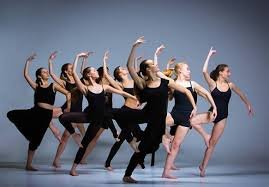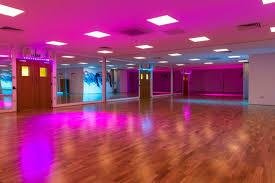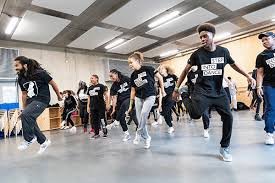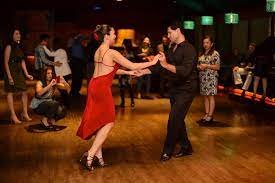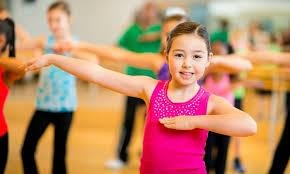What is Contemporary Dance? Contemporary Dance Courses (6 Months)
Contemporary dance is a style of dance that emerged in the mid-20th century and has since become a popular form of expression across the world. It is an eclectic dance form that incorporates elements from various styles, including modern, jazz, ballet, and postmodern dance. In this article, we will discuss the characteristics, history, techniques, and significance of contemporary dance.

Characteristics:
Contemporary dance is characterized by its fluidity, expressiveness, and versatility. It is an improvisational and experimental dance form that emphasizes individual creativity and personal interpretation. Some of the common characteristics of contemporary dance include:
- Use of improvisation: Contemporary dance emphasizes improvisation, allowing dancers to express themselves through movement that is spontaneous and unrehearsed.
- Fluidity of movement: Contemporary dance is known for its fluidity and flow of movement. Dancers move in a continuous and seamless manner, transitioning from one movement to another without breaking the flow.
- Incorporation of multiple styles: Contemporary dance draws from multiple styles, including modern, jazz, ballet, and postmodern dance. This eclectic mix of styles allows for greater creativity and expression.
- Emphasis on emotions and storytelling: Contemporary dance often tells a story or conveys emotions through movement. It is a highly expressive form of dance that allows dancers to communicate their feelings and experiences through movement.
- Use of space: Contemporary dance often involves the use of space in creative ways. Dancers may move off-center, use levels, and explore the space around them.
History:
Contemporary dance emerged in the mid-20th century as a response to the traditional and rigid techniques of ballet. It was a time of experimentation and innovation in the arts, and many choreographers sought to break free from the constraints of classical ballet.
One of the pioneers of contemporary dance was Martha Graham, who developed a technique that focused on the expressive potential of the body. Graham’s technique emphasized the contraction and release of muscles, and the use of breath to create movement.
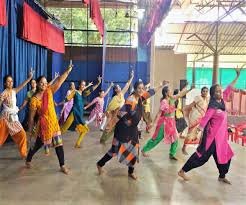
Another influential choreographer was Merce Cunningham, who developed a technique that emphasized the use of chance and randomness in choreography. Cunningham’s work was highly experimental and focused on exploring the boundaries of movement.
Over the years, contemporary dance has continued to evolve and incorporate new techniques and styles. Today, it is a popular form of dance that is performed in theaters, dance studios, and on television shows such as So You Think You Can Dance.
Techniques:
Contemporary dance incorporates a wide range of techniques and styles, making it a highly versatile and adaptable form of dance. Some of the common techniques used in contemporary dance include:
- Release technique: This technique emphasizes the release of tension in the body, allowing for greater fluidity and flow of movement.
- Contact improvisation: This technique involves two or more dancers moving together in a spontaneous and collaborative manner, using touch and weight-sharing to create movement.
- Floor work: Contemporary dance often involves movement on the floor, including rolls, falls, and slides.
- Partner work: Contemporary dance often involves partnering, with dancers supporting each other and moving together in intricate and dynamic ways.
- Improvisation: Contemporary dance emphasizes improvisation, allowing dancers to explore movement and express themselves in a spontaneous and creative manner.
Significance:
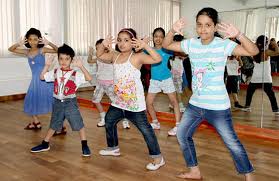
Contemporary dance has significant cultural and social significance. It is a highly expressive and emotional form of dance that allows dancers to communicate their feelings and experiences through movement. It is also a form of art that can challenge societal norms and expectations, and provide a platform for social and political commentary.
Contemporary dance is also an important form of physical exercise and can have significant health benefits. It improves flexibility, strength, and cardiovascular health, and can help to reduce stress and anxiety.
Contemporary Dance Courses (6 Months):
If you are interested in contemporary dance and want to learn the basics or improve your skills, there are several online courses available that you can complete in six months. Here are some examples of contemporary dance courses that you can take:
- Contemporary Dance Foundation Course: This course is offered by the Trinity Laban Conservatoire of Music and Dance in London and is designed for beginners who want to learn the basics of contemporary dance. The course covers techniques such as release, floor work, and improvisation, and includes weekly live classes and online resources. The course runs for six months and costs £600.
- Contemporary Dance Course: This course is offered by the International Dance Academy in Paris and is designed for intermediate and advanced dancers who want to improve their contemporary dance skills. The course covers techniques such as release, contact improvisation, and partnering, and includes weekly live classes and online resources. The course runs for six months and costs €1,350.
- Online Contemporary Dance Course: This course is offered by the Broadway Dance Center in New York and is designed for dancers of all levels who want to improve their contemporary dance skills. The course covers techniques such as floor work, improvisation, and partnering, and includes weekly live classes and online resources. The course runs for six months and costs $1,500.
- Contemporary Dance Program: This course is offered by the Peridance Capezio Center in New York and is designed for intermediate and advanced dancers who want to develop their contemporary dance skills. The course covers techniques such as release, floor work, and partnering, and includes weekly live classes and online resources. The course runs for six months and costs $3,000.
- Contemporary Dance Workshop: This course is offered by the Danceworks London in the UK and is designed for dancers of all levels who want to explore contemporary dance techniques. The course covers techniques such as release, floor work, and improvisation, and includes weekly live classes and online resources. The course runs for six months and costs £510.
Before enrolling in any of these courses, make sure to research the course requirements, syllabus, and instructor qualifications to ensure that it is the right fit for you. Additionally, be sure to set aside enough time and resources to commit to the course and practice regularly to see the best results. With dedication and hard work, you can improve your contemporary dance skills and achieve your goals.
Contemporary dance is a style of dance that emerged in the mid-20th century and has since become a popular form of expression across the world. It is an eclectic dance form that incorporates elements from various styles, including modern, jazz, ballet, and postmodern dance. In this article, we will discuss the characteristics, history, techniques, and significance of contemporary dance.

Characteristics:
Contemporary dance is characterized by its fluidity, expressiveness, and versatility. It is an improvisational and experimental dance form that emphasizes individual creativity and personal interpretation. Some of the common characteristics of contemporary dance include:
- Use of improvisation: Contemporary dance emphasizes improvisation, allowing dancers to express themselves through movement that is spontaneous and unrehearsed.
- Fluidity of movement: Contemporary dance is known for its fluidity and flow of movement. Dancers move in a continuous and seamless manner, transitioning from one movement to another without breaking the flow.
- Incorporation of multiple styles: Contemporary dance draws from multiple styles, including modern, jazz, ballet, and postmodern dance. This eclectic mix of styles allows for greater creativity and expression.
- Emphasis on emotions and storytelling: Contemporary dance often tells a story or conveys emotions through movement. It is a highly expressive form of dance that allows dancers to communicate their feelings and experiences through movement.
- Use of space: Contemporary dance often involves the use of space in creative ways. Dancers may move off-center, use levels, and explore the space around them.
History:
Contemporary dance emerged in the mid-20th century as a response to the traditional and rigid techniques of ballet. It was a time of experimentation and innovation in the arts, and many choreographers sought to break free from the constraints of classical ballet.
One of the pioneers of contemporary dance was Martha Graham, who developed a technique that focused on the expressive potential of the body. Graham’s technique emphasized the contraction and release of muscles, and the use of breath to create movement.

Another influential choreographer was Merce Cunningham, who developed a technique that emphasized the use of chance and randomness in choreography. Cunningham’s work was highly experimental and focused on exploring the boundaries of movement.
Over the years, contemporary dance has continued to evolve and incorporate new techniques and styles. Today, it is a popular form of dance that is performed in theaters, dance studios, and on television shows such as So You Think You Can Dance.
Techniques:
Contemporary dance incorporates a wide range of techniques and styles, making it a highly versatile and adaptable form of dance. Some of the common techniques used in contemporary dance include:
- Release technique: This technique emphasizes the release of tension in the body, allowing for greater fluidity and flow of movement.
- Contact improvisation: This technique involves two or more dancers moving together in a spontaneous and collaborative manner, using touch and weight-sharing to create movement.
- Floor work: Contemporary dance often involves movement on the floor, including rolls, falls, and slides.
- Partner work: Contemporary dance often involves partnering, with dancers supporting each other and moving together in intricate and dynamic ways.
- Improvisation: Contemporary dance emphasizes improvisation, allowing dancers to explore movement and express themselves in a spontaneous and creative manner.
Significance:

Contemporary dance has significant cultural and social significance. It is a highly expressive and emotional form of dance that allows dancers to communicate their feelings and experiences through movement. It is also a form of art that can challenge societal norms and expectations, and provide a platform for social and political commentary.
Contemporary dance is also an important form of physical exercise and can have significant health benefits. It improves flexibility, strength, and cardiovascular health, and can help to reduce stress and anxiety.
Contemporary Dance Courses (6 Months):
If you are interested in contemporary dance and want to learn the basics or improve your skills, there are several online courses available that you can complete in six months. Here are some examples of contemporary dance courses that you can take:
- Contemporary Dance Foundation Course: This course is offered by the Trinity Laban Conservatoire of Music and Dance in London and is designed for beginners who want to learn the basics of contemporary dance. The course covers techniques such as release, floor work, and improvisation, and includes weekly live classes and online resources. The course runs for six months and costs £600.
- Contemporary Dance Course: This course is offered by the International Dance Academy in Paris and is designed for intermediate and advanced dancers who want to improve their contemporary dance skills. The course covers techniques such as release, contact improvisation, and partnering, and includes weekly live classes and online resources. The course runs for six months and costs €1,350.
- Online Contemporary Dance Course: This course is offered by the Broadway Dance Center in New York and is designed for dancers of all levels who want to improve their contemporary dance skills. The course covers techniques such as floor work, improvisation, and partnering, and includes weekly live classes and online resources. The course runs for six months and costs $1,500.
- Contemporary Dance Program: This course is offered by the Peridance Capezio Center in New York and is designed for intermediate and advanced dancers who want to develop their contemporary dance skills. The course covers techniques such as release, floor work, and partnering, and includes weekly live classes and online resources. The course runs for six months and costs $3,000.
- Contemporary Dance Workshop: This course is offered by the Danceworks London in the UK and is designed for dancers of all levels who want to explore contemporary dance techniques. The course covers techniques such as release, floor work, and improvisation, and includes weekly live classes and online resources. The course runs for six months and costs £510.
Before enrolling in any of these courses, make sure to research the course requirements, syllabus, and instructor qualifications to ensure that it is the right fit for you. Additionally, be sure to set aside enough time and resources to commit to the course and practice regularly to see the best results. With dedication and hard work, you can improve your contemporary dance skills and achieve your goals.

